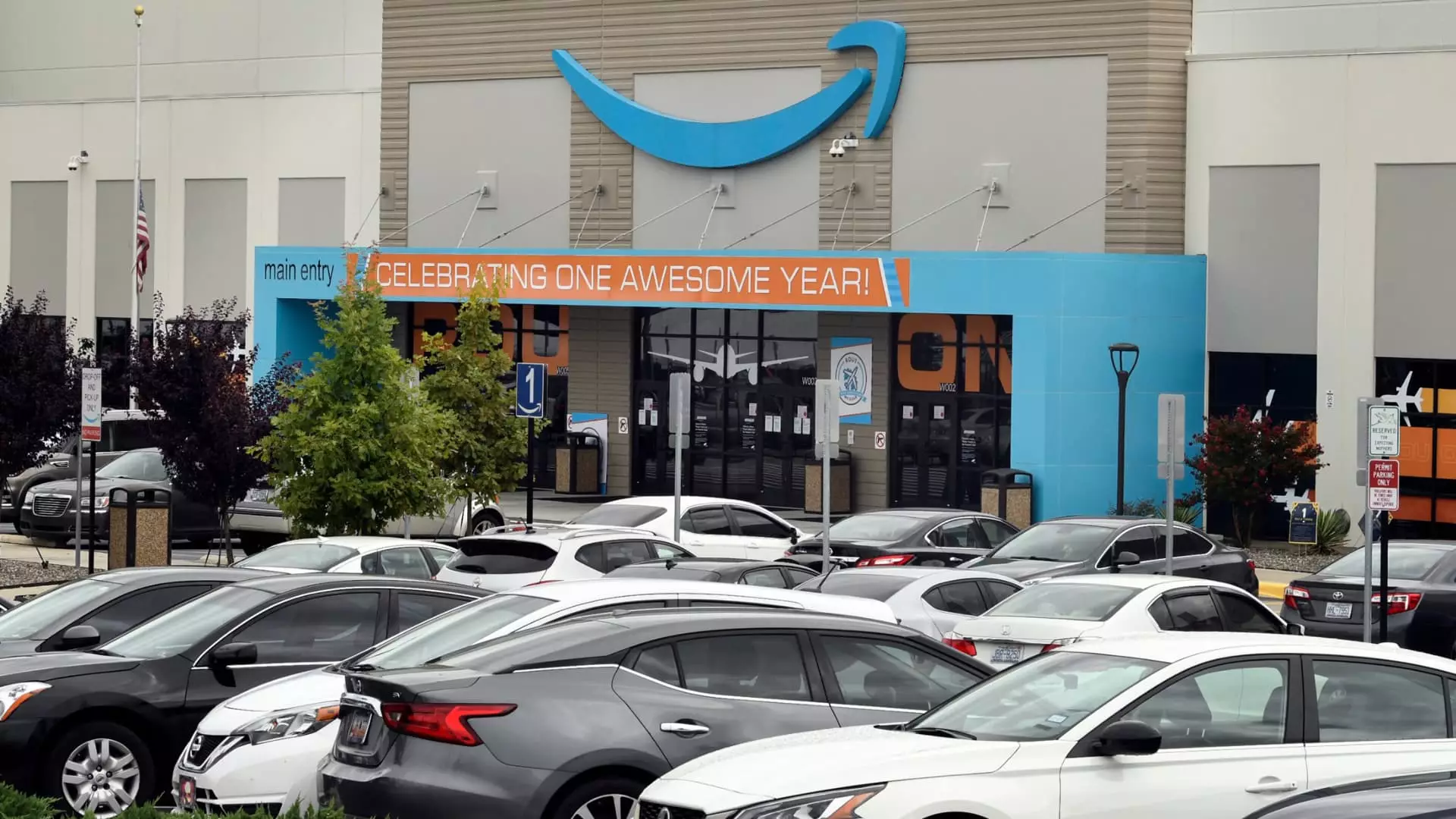The recent election at the Amazon RDU1 facility located in Garner, North Carolina, reveals much more than just a simple vote against unionizing. With 2,447 employees choosing to reject the formation of a union out of 3,276 total ballots cast, this event symbolizes the ongoing tension between corporate power and workers’ rights in the United States. The outcome underscores the broader struggles within the labor movement, especially in an era where a significant segment of the population supports unionization, yet membership rates continue to decline.
The election results, which are pending certification by the National Labor Relations Board (NLRB), point to a clear defeat for the Carolina Amazonians United for Solidarity and Empowerment (CAUSE), the group advocating for the union. Despite the high voter turnout, with over 80% of eligible employees participating, the overwhelming opposition signals a pivotal moment for the labor movement within the tech and logistics sector. Notably, the 77 challenged ballots—while statistically insignificant in this context—indicate potential lingering concerns about the process or employee sentiment that may not be fully captured in the final count.
The journey toward this election did not happen overnight; CAUSE campaigned within the RDU1 facility for three years. Founded by workers seeking better treatment during the COVID-19 pandemic, the organization aimed to elevate wages, working conditions, and employees’ overall quality of life. Starting pay at the RDU1 facility stands at $18.50 per hour, while CAUSE advocated for a living wage of $30. Their efforts reflect a growing awareness of food and housing insecurity among Amazon employees, more than half of whom are reportedly struggling to make ends meet.
Despite these motivations, the campaign faced a considerable backlash from Amazon. Reports indicate that anti-union messaging filled the facility, and leaders from the company actively discouraged employees from supporting CAUSE. Describing CAUSE as a “false union” served as a strategic move to undermine the legitimacy of their organizing efforts. This interplay between company tactics and employee desires illustrates the ongoing friction between management and labor in contemporary workplaces.
In the aftermath of the election, Amazon spokeswoman Eileen Hards issued a statement maintaining that the corporation did not interfere with the electoral process. Instead, she emphasized the importance of a direct relationship between employees and management. This narrative positions Amazon as a benevolent employer that respects the choices of its workers. However, the counter-narrative from CAUSE suggests otherwise, branding Amazon’s practices as manipulative and intimidating.
This perception aligns with Amazon’s historical reluctance to welcome unions into its workforce. While the company managed to stave off organizing efforts successfully until recent union victories at other facilities, public support for labor remains potent. Even with ongoing challenges in private sector union membership—dipping to 5.9% as of 2024—Gallup polls indicating 67% approval for labor organizations suggest a growing divergence between public sentiment and actual union participation rates.
Regional Dynamics: North Carolina’s Unique Landscape
North Carolina presents an intriguing case study for labor organizing, particularly given its historical context of low union membership rates, at just 2.4%. This lack of participation raises questions about the structural and cultural barriers that hinder union growth, even as national movements favoring labor rights gain momentum. The challenges faced by CAUSE in garnering support at RDU1 are reflective not merely of Amazon’s tactics but of broader regional dynamics that complicate unionization efforts.
The AVE (Amazon vs Employees) paradigm illustrates the intricate dance between worker agency and corporate control. Employees are increasingly vocal about their challenges, yet the local environment often seems steeped in a distrust of organized labor, exacerbated by the influence of anti-union rhetoric and company politics.
Despite the setback at the RDU1 facility, CAUSE has expressed intentions to continue advocating for worker rights. While Saturday’s vote may indicate a temporary defeat, it also sheds light on persistent issues within the workplace that need addressing. Moreover, the outcomes of this election highlight an enduring truth: the fight for equitable labor practices is far from over. As regional dynamics shift and national sentiments continue to evolve, the landscape for labor organization in America—not just at Amazon, but across various industries—remains ripe for transformation.

